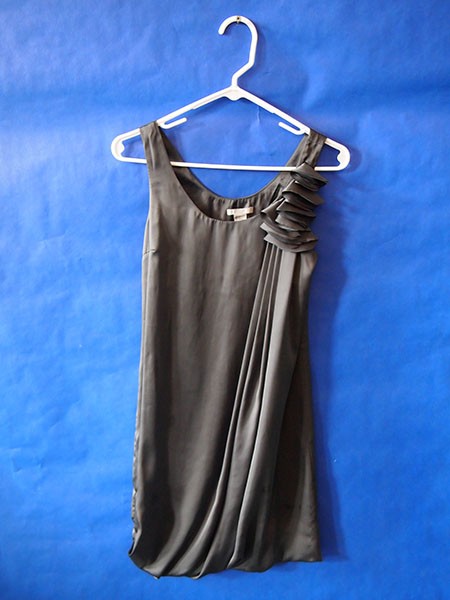![]() body | color | collections | commodity | cube | document | fabric | fetish | gender | glass | home | identity | living | machine | metal | minimal | mobility | narrative | olfactory | organic |
body | color | collections | commodity | cube | document | fabric | fetish | gender | glass | home | identity | living | machine | metal | minimal | mobility | narrative | olfactory | organic |
![]() pain | paper | plastic | plugs | power | protective | rectangular | ritual | round | sound | souvenir | spiritual | style | text-based | time | tool | touch | uniform | value | visual | warm | wood
pain | paper | plastic | plugs | power | protective | rectangular | ritual | round | sound | souvenir | spiritual | style | text-based | time | tool | touch | uniform | value | visual | warm | wood
| Clothing: Shiny Gray Dress | |||
Narrative: H&M Purchasd for a wedding in 2012. In 1946 American du Pont de Nemours and Co. purchased right to manufacture polyester in the United States nearly reversing fiber rations in the U.S. in the 1950’s. It’s development and usage in World War II brought the use of synthetic fibers during wartime up 10%. Derived from coal, air, water, and petroleum. Principle ingredient in manufacturing is ethylene (from petroleum). Fibers are formed from a chemical reaction between acid and alcohol. The structure of the molecule created repeats throughout the fiber length. Basic forms of manufacturing are filament, staple, tow, and fiberfill. Does not absorb moisture but does absorb oil; perfect for application of water, soil, fire resistant finishes. Does not stretch out of shape once pre-shrunk, does not get damaged by mildew. H&M's supply chain consists of Factory Employees, Second-tier Suppliers, Suppliers, Shippers, Auditors, Merchandisers, and Buyers. Cotton is farmed and picked in India, China, and Turkey Clothing design and samples made in Stockholm, Sweden where the headquarters are located. Dying mills and water supply near the Yangtze River in China. Washed and cleaned with water from the Brahmaputra River in Assam. Made and manufactured in Dhaka, Bangladesh; Bangkok, Thailand; Bangalore, Karnataka, India; Bandung, Indonesia; among others. H&M clothing labels and tags are printed in Stockholm, Sweden (approved by the EU Ecolabel Company). Papers are made from Forest Stewardship Council trees (FSC certified). Final products are sent to Hamburg, Germany where they are distributed to store locations. In a recent study commissioned by Greenpeace International, several major clothing brands including H&M were found guilty of using nonylphenol ethoxylates (NPEs) in the manufacturing process. This chemical breaks down into toxic nonylphenol (NP), which has hormone-disrupting properties that persist over time and can be hazardous even at low levels. |
 |
||
![]()
